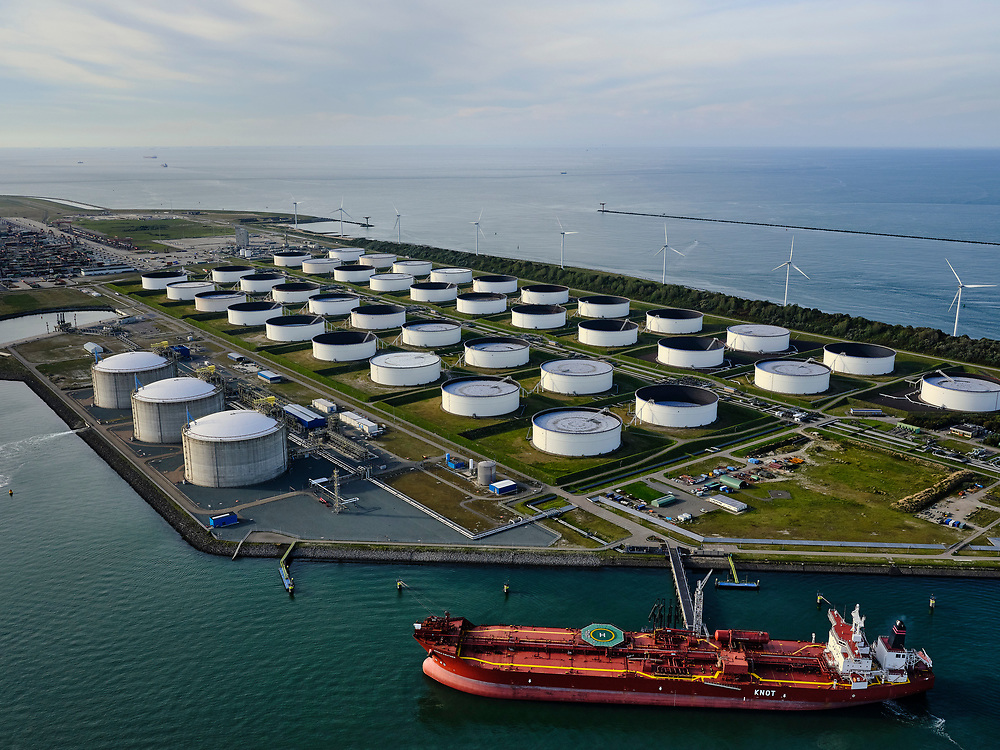
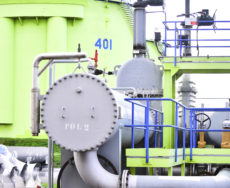
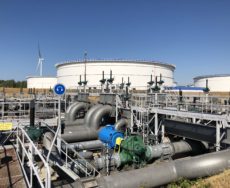
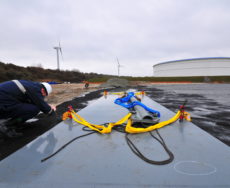
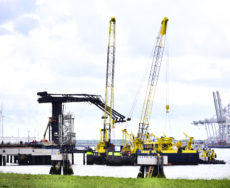
The good maritime infrastructure allows the largest tankers to moor here. Each year, some 240 tankers transport a total of between 35 and 40 million tons of oil. This is a third of the total supply of crude oil in Rotterdam. Storage takes place in large tanks.
The oil is distributed via numerous pipelines. Continuous attention to safety and the environment contributes to a safe and healthy working environment that is in harmony with the nature that is abundantly present on the Maasvlakte.
For unloading tankers we have two jetties at our disposal. The discharge line runs from the head of the jetty to the connection to the pipeline network at the terminal under the road surface. The jetties are constructed in such a way that they can handle the largest tankers. These are tankers with a length of up to 460 metres and a draught of up to 22 metres.
Mooring a supertanker requires the utmost concentration of all involved. Help is available in the form of a laser docking system. On the jetty are large electronic signs on which the pilot reads the approach speed to the jetty. This information is registered in the control room.
We regularly receive tankers from the category VLCCs: Very Large Crude Carriers. Both jetties have four discharge arms. The MOT operators use a wireless remote control to connect these arms. When all safety procedures have been completed, the discharge begins. The berth time at the jetty depends on the size of the vessel and varies between 24 and 48 hours.
An extensive pipeline system with remotely controlled valves distributes the oil over the storage tanks. Distribution to the users is done with the help of large pumps. The crude oil is pumped to refineries or other terminals via the regional pipeline network. In this way, all Dutch refineries receive oil from MOT. Some pipelines also have a connection to the international network. In addition to being an efficient means of transport, pipelines are also extremely safe.
The vast majority of the supply is first stored in one of the 39 tanks. The tanks are 22 metres high and have a diameter of 85 metres. In terms of height, this can be compared to a seven-storey building, the total surface area of a tank is equal to the surface area of a large football field. A tank can store around 114,000m 3 of crude oil. If this quantity is converted into petrol in a refinery, this will yield so much petrol that more than 90,000 cars can drive on it for a year.
Crude oil
Crude oil, also known as petroleum, is supplied to MOT from various parts of the world by supertanker. It is often thought that all crude oil is so thick that it is almost impossible to pump and is always intensely black. However, petroleum can be as liquid as olive oil and the colour is often brown. In addition to fuels for cars, scooters, ships and aircraft, crude oil is also the ‘engine’ for the chemical industry. For example, part of the naphtha and gases obtained during the refining process goes to the chemical industry. There it forms the basis for other products that have become indispensable in daily life. Such as: plastics, cosmetics and medicines.
